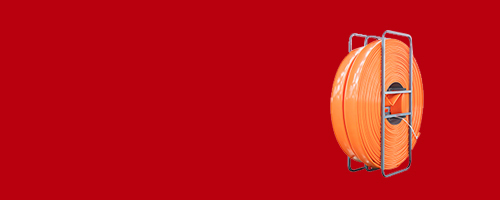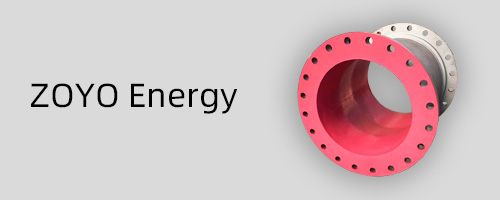
Is Your Petroleum Transfer Hose Safe Enough
2025-11-03 13:57
When you're transferring petroleum products, whether it's fueling a ship, loading a tanker truck, or supplying a remote power generator, there's one component that stands between efficient operation and a potential disaster: the petroleum transfer hose. It looks like a simple piece of equipment, but its role is critical. At ZYfire Hose Corporation, we've spent decades engineering hoses that don't just meet standards; they set new benchmarks for safety and reliability. This isn't just about moving liquid from point A to point B. It's about ensuring that every transfer is conducted with absolute integrity, protecting your personnel, your assets, and the environment.
So, how can you be certain that the hose you're relying on is truly safe enough for the demanding job it has to perform? Let's dive deep into the world of petroleum transfer hoses, exploring the hidden risks, the essential features of a superior hose, and how making an informed choice can safeguard your operations.
The Unseen Risks of a Substandard Hose
Many operators see a hose as a commodity—a simple tube. This misconception is the root cause of many failures. A substandard or improperly selected petroleum transfer hose can lead to catastrophic consequences:
Leaks and Spills: Even a small pinhole leak can lead to significant product loss and environmental contamination. Clean-up costs can be astronomical, not to mention the hefty regulatory fines and irreparable damage to your company's reputation.
Permeation: This is a silent threat. Hydrocarbons can slowly permeate through the hose wall, especially if the inner tube material is not compatible. This leads to weight gain in the hose, degradation of its structure, and the release of volatile organic compounds (VOCs) into the atmosphere, creating a health and safety hazard.
Swelling and Blistering: Certain petroleum-based fluids can cause the inner tube of a low-quality hose to swell, soften, or blister. This reduces the internal diameter, restricts flow, and can lead to chunks of material breaking off and clogging valves or filters downstream.
Catastrophic Rupture: The ultimate failure. Under high pressure or due to material fatigue, a hose can burst. This creates a massive spill, an extreme fire hazard, and a life-threatening situation for anyone nearby.
Abrupt Cover Failure: The external cover of a hose is its first line of defense against abrasion, weather, and impact. If it cracks, wears through, or degrades quickly under sunlight (UV degradation), the reinforcement wires are exposed. This can lead to rust, snagging, and ultimately, a rupture.
The common thread in all these failures? They are almost always preventable with the right hose technology and a rigorous inspection regime.
Beyond the Rubber: Deconstructing a High-Performance Petroleum Transfer Hose
A ZYfire petroleum transfer hose is a marvel of engineering, with each layer meticulously designed for a specific purpose. Understanding this construction is key to appreciating its value.
1. The Inner Tube (The Barrier):
This is the most critical component, as it is in direct contact with the fluid. We don't use a "one-size-fits-all" compound. At ZYfire, we utilize advanced, oil-resistant synthetic rubbers like NBR (Nitrile Butadiene Rubber) and HNBR (Hydrogenated Nitrile Butadiene Rubber) that are specifically formulated to resist:
Abrasion: From suspended particles in the fuel.
Swelling: Maintaining its shape and integrity for consistent flow.
Permeation: Acting as a robust barrier to minimize hydrocarbon loss.
Chemical Attack: From additives and various grades of crude oil, gasoline, diesel, and jet fuel.
2. The Reinforcement (The Muscle):
This layer gives the hose its strength to contain operating pressure and handle mechanical stresses. We offer different reinforcement types to match the application:
High-Tensile Steel Wire Braid: Ideal for high-pressure applications like tanker truck loading and unloading. It provides excellent strength and good flexibility.
Multiple Spiral Steel Wire: Used for our most demanding hoses, especially in marine and terminal applications. This construction offers superior pressure ratings, exceptional crush resistance, and excellent suction capabilities.
Textile Reinforcement: For lower-pressure applications, providing flexibility and cost-effectiveness.
3. The Outer Cover (The Armor):
The unsung hero of the hose. The ZYfire cover is compounded to be:
Abrasion-Resistant: To withstand being dragged over concrete, gravel, and other rough surfaces.
Weather and Ozone Resistant: To prevent cracking and degradation when used outdoors for extended periods.
UV Resistant: To maintain integrity under direct sunlight.
Fire Retardant: Many of our hoses feature covers that are designed to self-extinguish, a critical safety feature in volatile environments.
The ZYfire Difference: Where Engineering Meets Practicality
While superior materials are the foundation, the true ZYfire difference lies in our design philosophy and manufacturing rigor.
Application-Specific Solutions: We don't just sell you a hose; we provide a solution. Are you operating in a cold climate? We have hoses that remain flexible at sub-zero temperatures. Working on a chemical tanker with aggressive solvents? We have a hose for that. Our technical team works with you to select the perfect hose for your specific fluid, pressure, temperature, and environmental conditions.
Rigorous Quality Control: Every batch of raw material is tested before it enters our production line. Every meter of finished hose undergoes stringent pressure tests, electrical conductivity tests (to prevent static discharge), and visual inspections. This ensures that when a hose leaves our factory with the ZYfire name on it, it carries our promise of uncompromising quality.
Durability That Lowers TCO (Total Cost of Ownership): A cheaper hose may have a lower initial price, but its frequent failures lead to higher downtime, more frequent replacements, and greater risk. A ZYfire hose is an investment in uptime and peace of mind. Its extended service life and reliability dramatically reduce your total cost of ownership over time.
Your Role in the Safety Chain: Inspection and Maintenance Best Practices
Even the best hose in the world requires proper care. Safety is a partnership between our manufacturing excellence and your operational diligence. Here is a simple yet effective checklist:
Daily Visual Inspection (Before every use):
Look for Cuts, Cracks, or Abrasions: Pay close attention to areas near couplings and where the hose contacts the ground or other surfaces.
Check for Blisters, Soft Spots, or Bulges: These indicate internal damage or tube degradation.
Inspect the Couplings: Look for signs of corrosion, loose bolts, or leaks at the connection point.
Look for Kinks or Twists: These can damage the reinforcement and create weak points.
Periodic Pressure Testing:
Follow industry standards and your company's safety protocol to conduct periodic proof-pressure tests to ensure the hose's integrity has not been compromised over time.
Proper Storage and Handling:
Do not drop heavy objects on the hose.
Avoid running vehicles over it.
Store it on a reel or in a cool, dry, dark place away from ozone sources (like electric motors).
Never stack heavy items on top of stored hoses.
A Partnership in Safety and Efficiency
Choosing a petroleum transfer hose is one of the most significant safety decisions you will make. It's a decision that impacts your bottom line, your regulatory compliance, and most importantly, the well-being of your team and the environment.
At ZYfire Hose Corporation, our expertise isn't just in molding rubber and weaving steel; it's in understanding the real-world challenges you face every day. We bring that expertise to every product we create. Our commitment to E-E-A-T—Experience, Expertise, Authoritativeness, and Trustworthiness—is woven into the very fabric of our hoses. We have the experience of serving global industries for years, the expertise in polymer science and mechanical engineering, the authoritativeness that comes from certifying our products to international standards like API, OCIMF, and ISO, and the trustworthiness built on a reputation for delivering what we promise: unparalleled safety and performance.
Don't gamble with a critical link in your operation. Ask the right questions, inspect diligently, and partner with a manufacturer that treats safety with the same seriousness you do.
Is your petroleum transfer hose safe enough? With ZYfire, the answer is a resounding yes.
Get the latest price? We'll respond as soon as possible(within 12 hours)









